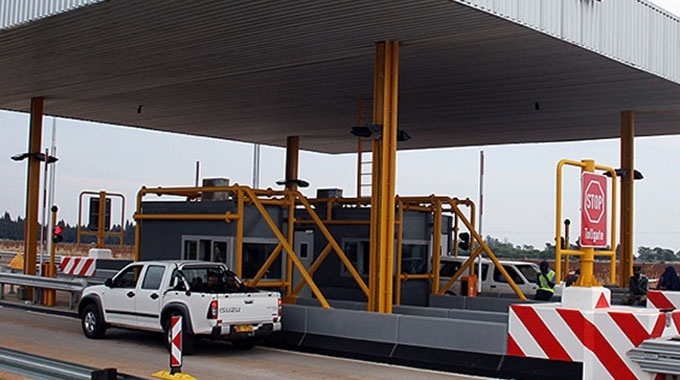Facelift for Bulawayo Government schools

Mashudu Netsianda, Senior Reporter
GOVERNMENT has partnered the Church of Jesus Christ of the Latter-day Saints to build new classroom blocks and refurbish old ones in several schools in Bulawayo in line with the National Development Strategy (NDS1).

National Development Strategy 1 (NDS1)
Under the NDS1, Government will be paying particular attention to broadening access and participation to education by marginalised populations in both rural and urban areas with the private sector expected to play a key role as envisaged by the strategic economic blueprint.
As part of implementing Vision 2030 anchored on the NDS1, Government has approved the construction of 3 000 new schools by 2025 because of the phenomenal increase in learner enrolment which has resulted in the need for the establishment of more educational facilities in the country.
In Bulawayo, Government has partnered with the Church of Jesus Christ of the Latter-day Saints to build new classrooms and science laboratory blocks as well as refurbish classrooms and toilets at Cowdray Park Primary School, Pumula South Secondary, Mncumbatha Secondary School, Mandwandwe High School, Emganwini High School and Maphisa Primary School.

A classrooms block under construction at Mandwandwe High School
Bulawayo Provincial Affairs and Devolution Minister Judith Ncube on Monday toured the schools to assess progress.
“I am grateful to see a lot of work being carried out by Government in partnership with Church of Jesus Christ of the Latter-day Saints. Most of these new classroom blocks were built and completed in a space of two weeks,” she said.
“We want more classrooms to address the issue of hot-sitting.
As Government we are happy to note that we have private players who are committed to complementing us in such developmental projects in our province.”
Minister Ncube said ongoing developments are an indication that the country is moving towards attaining Vision 2030.
She said due to hot-sitting, there has been a decline in the pass rate.
“We are moving in the right direction towards attaining our national vision of an upper middle-income economy by 2030.
If you look at these structures that are being put up, it is part of a process of improving the pass rate,” said Minister Ncube.
“The shortage of classrooms impact negatively in terms of the pass rate as children are exposed to hot sitting, which is not friendly to the learners, teachers, parents and Government hence the need to work together.”
Acting Provincial Education Director for Bulawayo, Mrs Jane Ndebele said the province had been hit by a shortage of learning space.
“We greatly appreciate the support that we are getting from the church in terms of growth and development of our schools.
Most of our schools are hot sitting resulting in learners attending lessons for a short time since they will be sharing the learning space,” she said.
“With these new developments, pupils will spend more time in school and results will improve.”
Church of Jesus Christ of the Latter-day Saints director of communications and public affairs Mr Stephen Guwa said through their arm, Church of Jesus Christ of the Latter-day Charity, they have built classroom blocks and refurbished classrooms in Bulawayo in Matabeleland North Province.
“On our part as a church, we are complementing Government efforts in the education sector through building classroom blocks and refurbishing old ones to ensure children have better learning facilities.
So far, we have refurbished six schools in Bulawayo and drilled boreholes as well as equipping the classrooms with furniture,” he said.
“We got a call from the Permanent Secretary of Primary and Secondary Education seeking our assistance. We also managed to build classroom blocks, teachers’ cottages at Johanna MaFuyana Primary School in Nyamandlovu.”

Mrs Olicah Kaira
Chief director for Primary, Secondary and Non-Formal Education in the ministry, Mrs Olicah Kaira recently told the Parliamentary Portfolio Committee on Primary and Secondary Education that the Government has since availed $4,69 billion for the construction of 35 model schools in all the country’s 10 provinces.
Already, sites for the schools have been identified under the programme, 19 primaries and 16 secondary schools will be constructed with eight offering secondary school boarding facilities.
Of the 35 school sites, 25 are satellite schools already operating without proper infrastructure.
Government has set a target of constructing 3 000 new schools by 2025 to decongest schools. Private players have been urged to partner with the Second Republic in this endeavour.
There are 9 778 schools, with 6 798 primary and 2 980 secondary schools, with a total enrolment of 4 659 993.
The construction project will be implemented in phases next year starting with 100 and 144 model 21st century Government primary and secondary boarding schools spread across all the country’s 10 provinces.
One primary and one secondary boarding school with adequate state-of-the-art facilities will be constructed in each of the 72 districts of the country.
Treasury will fund the first 144 schools, while public-private or joint venture arrangements will be crafted to assist in the construction of the three thousand new schools required.
— @mashnets.











Comments